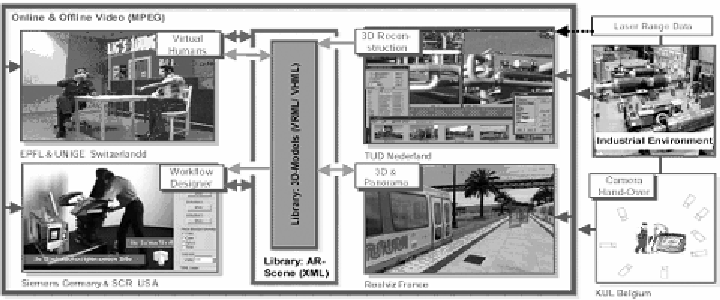Game Development Reference
In-Depth Information
Figure 7.
STAR project components.
with a camera and a wireless connection to the local computer network. The
camera captures the workspace in which the worker is operating and the video
from the camera is transmitted over the network to an expert. The 3D position
of the camera with respect to the scene is tracked automatically by the system,
using feature-matching techniques. The expert can augment the video with a
variety of relevant information: text, 3D, etc., and send the augmented view back
to the worker over the network. He will then use this information to decide what
steps to perform next.
STAR Technical Approach
The main component of STAR is the “virtual human,” a set of connected
software components that allows manipulation of mixed objects by virtual
humans. The operator is able to add autonomous virtual humans into augmented
environments. Both the user and autonomous virtual humans are able to move,
animate, and deform objects, whether real or virtual. This involves replacing real
objects with virtual ones when they are being manipulated.
The STAR project uses and investigates different edge-based and feature-based
tracking algorithms in different components. Tracking information is then used
to control the virtual human and manipulate the virtual objects.
BLUE-C Project
The
blue-c
(BLUE-C Project) is a joint research project between several
institutes at ETH Zurich. The goal is to build a collaborative, immersive virtual
environment, which will eventually integrate real humans captured by a set of

Search WWH ::

Custom Search